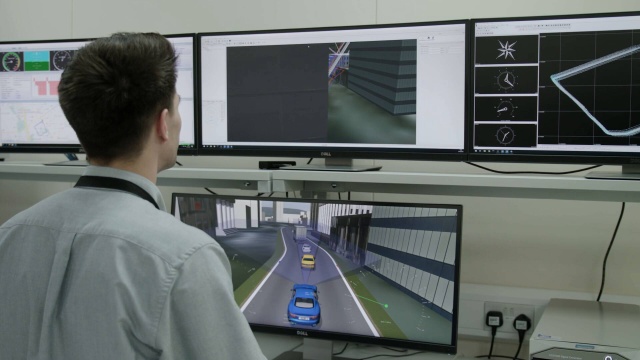Within the fast-evolving global of engineering and product design, checking out methods earlier than they hit the true global is a mild steadiness between accuracy and practicality. Believe looking to rehearse a live performance with each genuine tools and a simulated orchestra — this mix of the tangible and the digital is exactly what {Hardware}-in-the-Loop (HIL) checking out achieves.
By way of integrating an actual {hardware} element right into a digital simulation atmosphere, HIL permits engineers to validate and fine-tune methods lengthy earlier than a bodily prototype is entire. This system bridges creativeness and implementation, making sure precision, protection, and cost-effectiveness in advanced device checking out environments.
The Orchestra Analogy: Why HIL Checking out Issues
Recall to mind a product construction procedure as an orchestra. Every device (device, sensors, keep an eye on devices, or mechanical portions) should play in highest unity. In truth, it’s just about unattainable to have all tools in a position early within the procedure. That’s the place HIL steps in — simulating lacking tools whilst permitting the true ones to accomplish in sync.
This setup supplies builders with fast comments on how an actual element interacts inside of a digital atmosphere. Whether or not it’s an automobile Digital Keep watch over Unit (ECU) or an airplane’s hydraulic keep an eye on, HIL guarantees that real-world stipulations are reflected as intently as imaginable.
For beginners exploring complicated checking out and validation tactics, enrolling in a device checking out route in Pune supplies the easiest basis to know the way digital and bodily methods mix seamlessly in real-world initiatives.
How HIL Works: The Fusion of Digital and Actual
HIL checking out replaces portions of a bodily machine with device simulations that mimic their behaviour. For instance, in an automotive braking machine, the bodily brake controller could be examined inside of a digital automobile style operating in genuine time.
The method comes to 3 vital elements:
- The Actual-Time Simulator: Mimics the surroundings and attached methods.
- The {Hardware} Part: The true tool underneath check, like a sensor or microcontroller.
- The Interface: Connects genuine {hardware} alerts to digital ones, making sure right kind conversation.
This permits engineers to watch how {hardware} responds to simulated stipulations — temperature fluctuations, sign noise, or unexpected machine adjustments — with out hanging the true machine in danger.
Benefits of HIL Checking out: Potency Meets Accuracy
The real energy of HIL lies in its skill to mix realism with keep an eye on. It permits iterative, quick, and secure experimentation.
- Value Aid: Bodily prototypes are pricey and time-consuming to construct. Simulated environments lend a hand scale back prices through validating {hardware} efficiency early.
- Enhanced Protection: Crucial methods like airplane controls, automobile brakes, and clinical gadgets can also be examined in excessive digital stipulations — situations too unhealthy to breed in genuine lifestyles.
- Quicker Time to Marketplace: Engineers can run masses of assessments day-to-day the use of automatic frameworks, accelerating product supply cycles.
- Scalability: HIL permits steady checking out because the design evolves, making sure each and every exchange is validated straight away.
Those advantages make HIL indispensable in trendy checking out pipelines the place reliability and innovation should move hand in hand.
Programs Throughout Industries
HIL checking out isn’t restricted to 1 area — its versatility spans more than one sectors:
- Automobile: Validating engine keep an eye on methods, ADAS (Complicated Driving force Help Methods), and electrical automobile elements.
- Aerospace: Checking out flight keep an eye on device with out risking genuine airplane.
- Power Methods: Simulating energy converters, grids, and renewable power controls.
- Commercial Automation: Verifying robotics and keep an eye on good judgment earlier than deployment.
The call for for pros professional in those checking out strategies continues to develop. Novices pursuing a software testing course in Pune achieve sensible insights into such complicated simulation frameworks, making ready them for high-demand roles within the engineering and production sectors.
Demanding situations in Enforcing HIL
Whilst HIL gives immense doable, imposing it successfully calls for precision. Some demanding situations come with:
- Advanced Setup: Integrating bodily and simulated methods calls for powerful calibration.
- Latency Problems: Actual-time synchronisation should be flawless to deal with accuracy.
- {Hardware} Boundaries: The constancy of effects will depend on how neatly the {hardware} interfaces with digital fashions.
Overcoming those demanding situations calls for sturdy basics in device checking out, knowledge conversation, and methods engineering — talents that may be honed via structured coaching and hands-on follow.
Conclusion: Checking out the Long term Lately
{Hardware}-in-the-Loop checking out symbolises the way forward for validation — the place creativeness meets engineering rigour. It empowers builders to experiment boldly, expect correctly, and innovate fearlessly, all whilst making sure reliability in real-world methods.
In an generation the place bodily prototypes are expensive and time-consuming, HIL stands as a bridge between idea and introduction. For aspiring engineers and testers, mastering this synergy between {hardware} and simulation opens doorways to state of the art alternatives in automation, automobile, aerospace, and past.
Via constant finding out and publicity, pros can flip advanced simulations into on a regular basis equipment — making generation no longer simply sooner however smarter.



